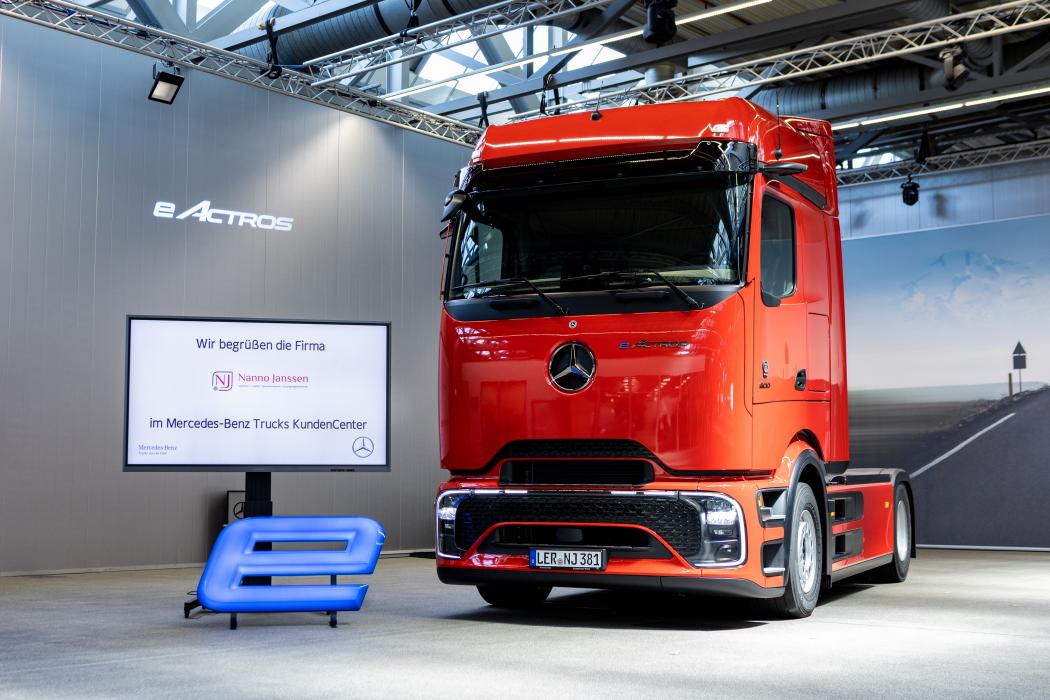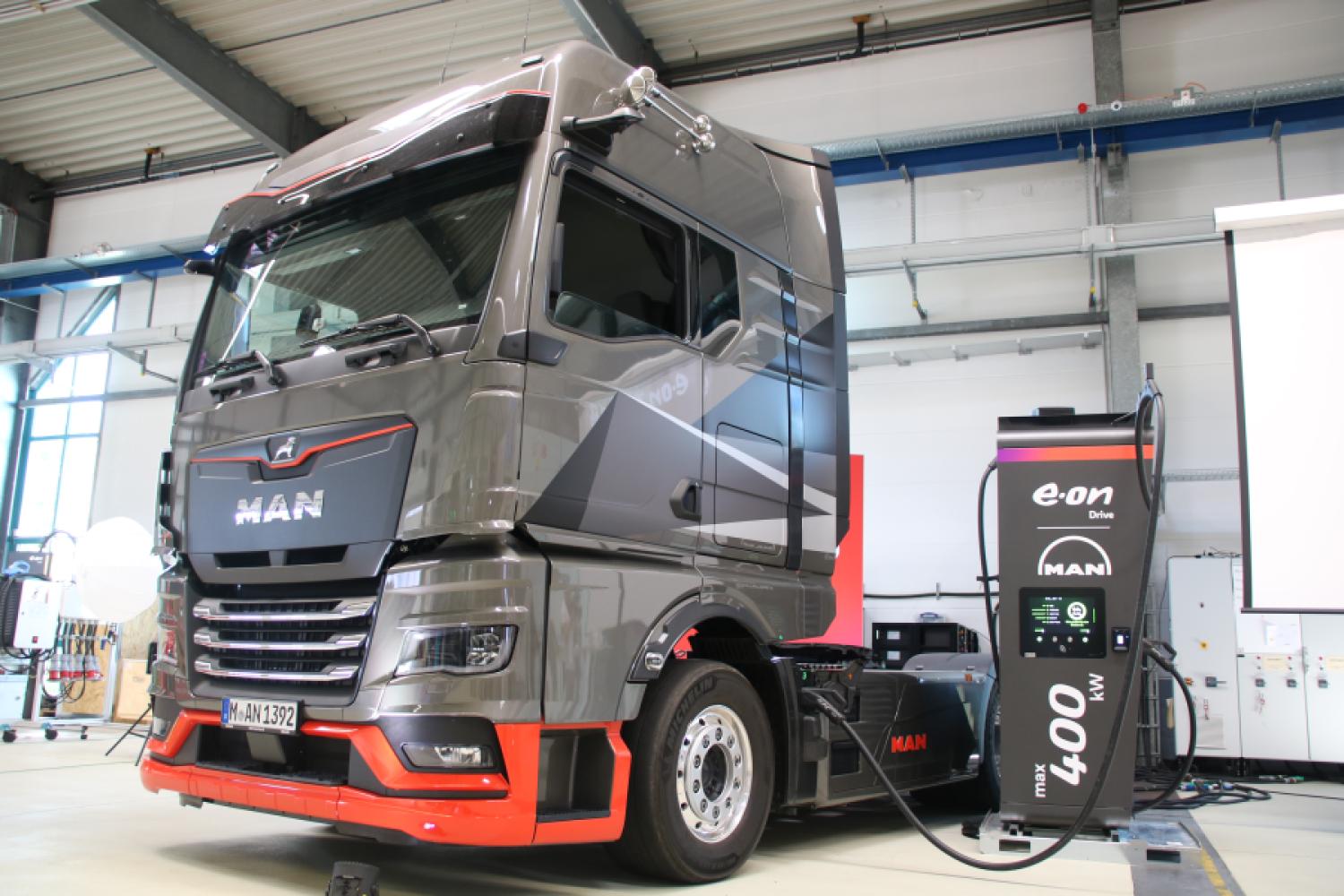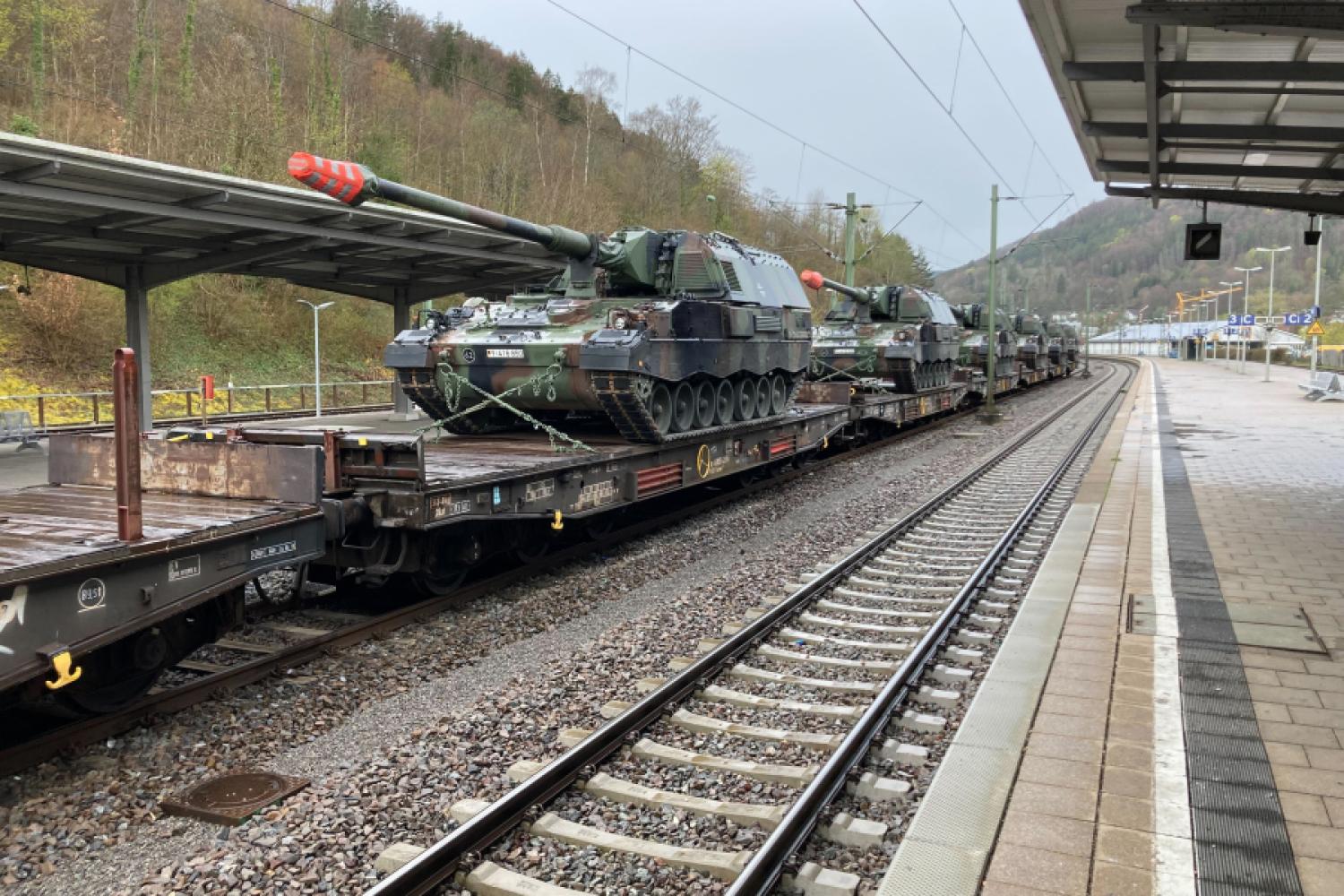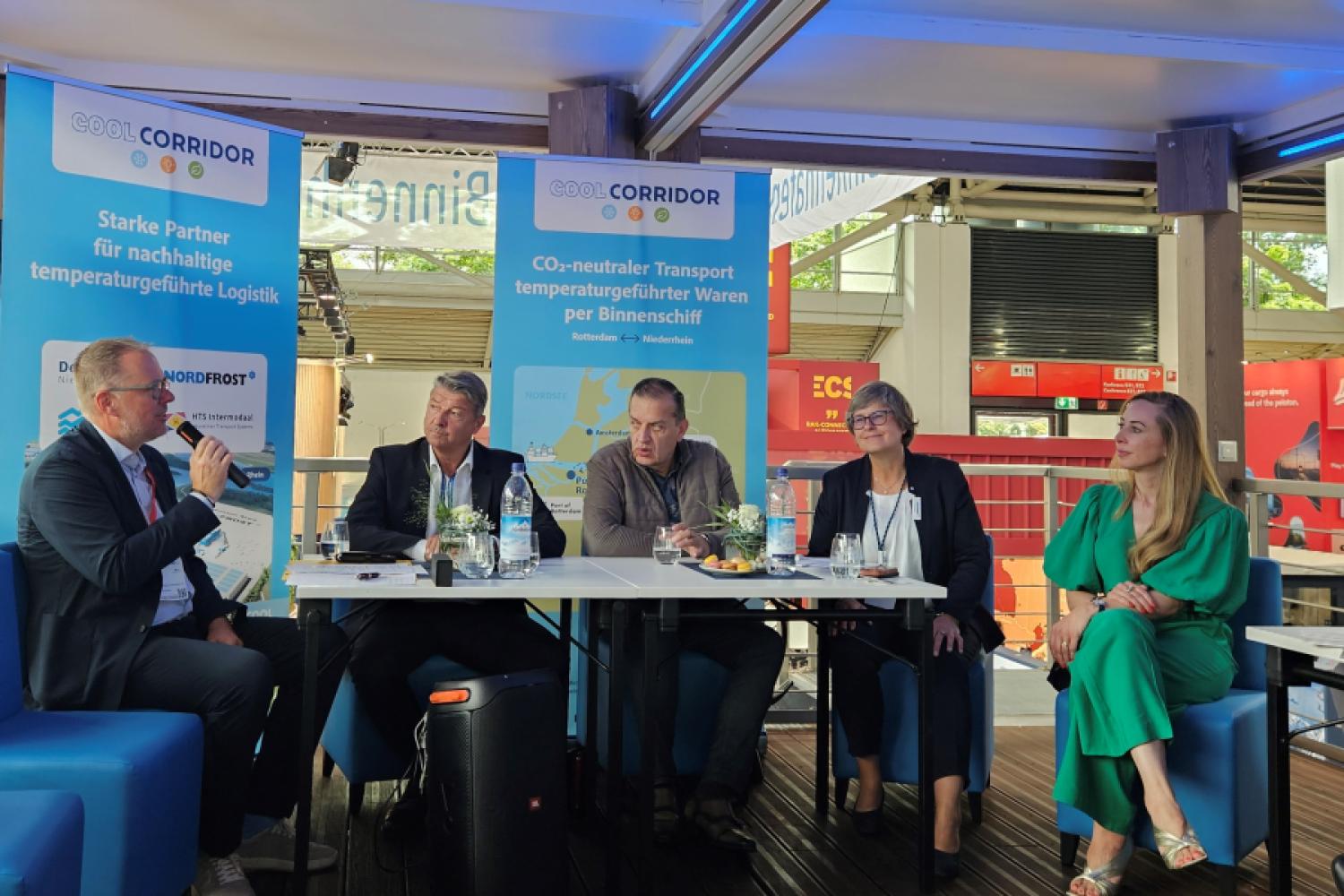The freight company Nanno Janssen from Leer in Lower Saxony is gradually converting its vehicle fleet to battery-electric trucks. Currently, 27 out of a total of 75 company-owned vehicles are electrically powered. According to a recent press release from Mercedes-Benz Trucks, this number is expected to rise to 50 by the end of 2025. This would mean that more than half of the fleet would be electric.
No further diesel procurements planned
The freight company, according to the information, excludes the acquisition of more diesel vehicles into the fleet. The only exception is the transport of pyrotechnics of hazardous goods class 1, which is currently only legally feasible with battery-electric vehicles in a limited manner.
The initiator for entering electromobility, according to the information, was Nanno Janssen junior, who took up his position as assistant to the management three years ago. At that time, the funding through the KsNI program was the financial incentive to initially apply for 20 e-trucks.
Acceptance and training at the Wörth plant
In June 2025, the freight company took over the first five of ten ordered eActros 600 at the Mercedes-Benz plant in Wörth am Rhein. The drivers of the company received technical instruction there. According to Mercedes-Benz
Trucks, the handovers of battery-electric vehicles in Germany mostly take place at the Wörth plant. As the company states, training on the new vehicle technology and charging behavior is particularly important in the initial phase.
Own charging park at company headquarters
A few days after taking over the vehicles, the freight company Nanno Janssen put a charging park into operation at its Leer location. The facility features ten charging stations, each with two charging points of 300 kW, and is equipped with a grid connection of 4 MW. A battery storage system with 1.3 MW capacity and an 800 kWp solar system complement the charging infrastructure. The press release by Daimler Truck points out that not all vehicles charge simultaneously as they are mostly in use. The charging park is thus also prepared for future requirements.
First testing under real conditions
The drivers transferred the new eActros 600 without a trailer from the Wörth plant to Leer, making a planned stop at the "Seed & Greet" charging park at the Hilden motorway junction. According to Nanno Janssen, the consumption on this trip was 60 kWh per 100 km, with a displayed range of 1,000 km remaining. The stop served as a scheduled stress
test of the charging infrastructure, organized with the involvement of driver Tobias Wagner. According to the company, Fastned’s charging facility managed the test without issues.
Use in nationwide long-distance transport
The vehicles are used nationwide in long-distance transport. Charging is mainly done at public charging stations. Since the charging processes cannot be remotely controlled, the drivers are equipped with several apps to help them find suitable charging stations and favorable rates. Full charges are usually done overnight, while intermediate charges occur during legally required breaks.
Driver acceptance and operational experiences
The freight company reports high acceptance among drivers. Tobias Wagner, a professional driver and operator of a YouTube channel with around 60,000 subscribers, is quoted in the press release:
“I enjoy every second in the new truck.”
According to the management, no one would want to return to a diesel vehicle after two weeks at the latest. Drivers particularly appreciate the noise comfort, driving dynamics, and clean loading conditions. From a business perspective, despite higher acquisition costs, similar kilometer costs to diesel can be achieved over the vehicle's lifespan, as variable costs are lower, according to Janssen.
Technical specifications of the eActros 600
The eActros 600 is equipped with three battery packs, each
with 207 kWh, totaling an installed capacity of 621 kWh. The batteries use lithium iron phosphate cell technology (LFP) and allow the manufacturer to use more than 95 percent of the installed capacity.
The range is up to 500 km under practical conditions with a total train weight of 40 tonnes. According to the press release, the vehicle can cover over 1,000 km per day if charging options are available, as intermediate charges during legal breaks are possible. The technical design allows for a total train weight of up to 44 tonnes. The payload in the EU is around 22 tonnes, although national regulations may allow for higher payloads.
Company profile
The freight company Nanno Janssen was founded in 1896 and is in its fourth and fifth generation of family ownership. The headquarters is in Leer, with another location in Fulda. The company employs around 120 people in Leer and 20 in Fulda. In addition to special transports such as plants for wind and solar energy, as well as machinery, the freight company also offers warehousing and contract logistics on 25,000 square meters of space. In the field of furniture and moving logistics, the subsidiary Cornelius Bordeaux is active, whose founding dates back






